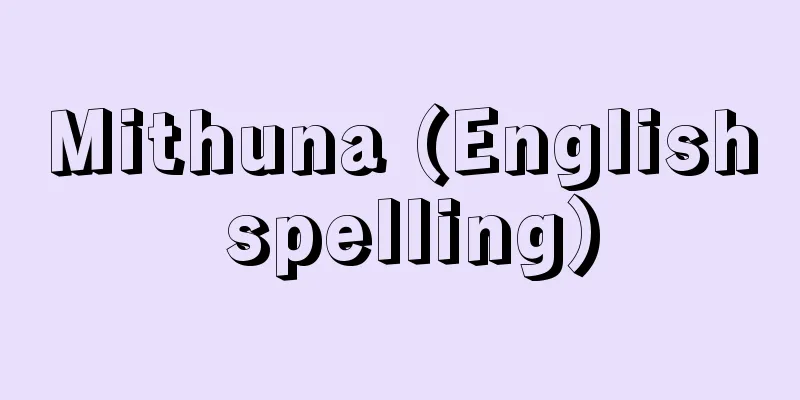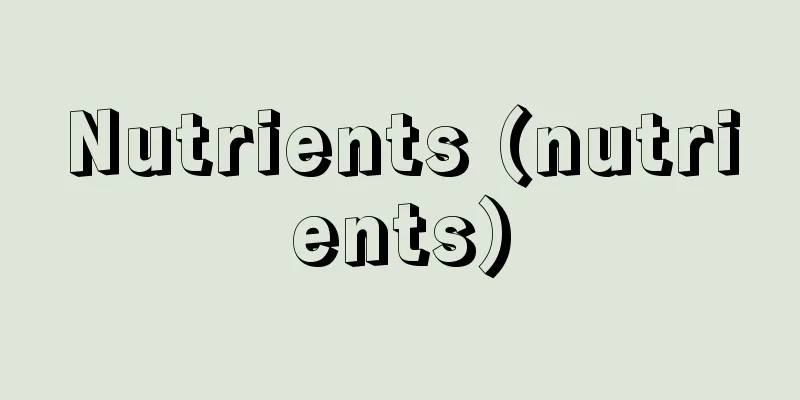Kujo Mitora

|
...an incident that occurred in 1221 (Jokyu 3) when Emperor Gotoba and his close retainers raised an army to overthrow the Kamakura shogunate, but were instead defeated and suppressed by the shogunate forces. From [Sekke Shogun]...Shogun from the regent family in the mid-Kamakura period. The name refers to Kujo Yoritsugu and his son Yoritsugu, and they are also known as the Fujiwara Shoguns. After Shogun Minamoto no Sanetomo was assassinated in 1219 (Jokyu 1), Mitsutora, the son of the Minister of the Left Kujo Michiie, was welcomed to Kamakura as Shogun because he was a distant relative of Minamoto no Yoritomo. Mitsutora was only two years old at the time, and Yoritomo's widow Hojo Masako handled government affairs. After Masako's death in 1225 (Karoku 1), Mitsutora came of age and took the name Yoritsugu. The following year, he was officially appointed Shogun. Even after handing over the Shogun position to his son Yoritsugu in 1244 (Kangen 2), Yoritsugu continued to wield hidden influence, and when Hojo Tokiyori became regent in 1246, Nagoshi Mitsutoki of the Hojo clan approached Yoritsugu and attempted to usurp the position of regent, leading to Yoritsugu being exiled to Kyoto (Palace Disturbances). ... *Some of the terminology that refers to "Article 9, Three Toras" is listed below. Source | Heibonsha World Encyclopedia 2nd Edition | Information |
|
…1221年(承久3)後鳥羽上皇とその近臣たちが鎌倉幕府討滅の兵を挙げ,逆に幕府軍に大敗,鎮圧された事件。 【摂家将軍】より…鎌倉中期,摂関家出身の将軍で,九条頼経・頼嗣父子を指し,藤原将軍ともいわれる。1219年(承久1)将軍源実朝が暗殺されて後,左大臣九条道家の子の三寅が,源頼朝の遠縁にあたるという理由で,将軍として鎌倉に迎えられた。三寅は当時2歳であり,頼朝の後家の北条政子が政務を行ったが,25年(嘉禄1)政子の死後,三寅は元服して頼経と称し,翌年,正式に征夷大将軍に任命された。44年(寛元2)子の頼嗣に将軍職を譲って後も頼経は隠然たる勢力を持ち,46年北条時頼が執権となると,北条一門の名越光時が頼経に接近し,執権の地位を奪おうとする事件がおこり,頼経は京都に追放された(宮騒動)。… ※「九条三寅」について言及している用語解説の一部を掲載しています。 出典|株式会社平凡社世界大百科事典 第2版について | 情報 |
Recommend
Karuizawa [town] - Karuizawa
A town in Kitasaku District, eastern Nagano Prefec...
Bügel (English spelling)
… A trolley pole is used on low-speed trains and ...
Clearing house
In an era when the payment system was heavily dep...
Takatsuki
It is a serving earthenware dish with a single leg...
Town gas - Toshigasu (English spelling) town gas
This refers to gas supplied mainly through a pipi...
Carex pumila (English name)
…[Tetsuo Koyama]. … *Some of the terminology expl...
Contraception - Hinin
A method for preventing conception and the establi...
Ammonium salt - Ammonium salt
A compound formed by the combination of ammonia a...
Silk grass (English spelling)
...It blooms from summer to autumn and has a long...
Nguyen Ai Quoc - Nguyen Ai Quoc
…Growing up under the influence of the nationalis...
Rajput (English spelling)
The name of a tribe that lived mainly in Rajasthan...
Macromiinae
…A general term for insects in the order Odonata,...
Prostitute - Suugi
〘 noun 〙 A geisha who has not yet become a full-fl...
Emperor Junna
Year of death: May 8, 7th year of Jowa (June 11, 8...
Rocking horse
…rocking horses have been around for a long time,...









